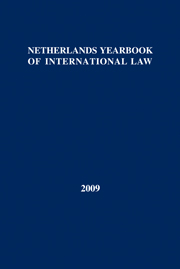Article contents
Rights of indigenous peoples – achievements in international law during the last quarter of a century*
Published online by Cambridge University Press: 09 November 2007
Abstract
The United Nations General Assembly is faced with a draft declaration on the rights of indigenous peoples, the product of a quarter of a century of international negotiations where indigenous peoples played an important but informal role through the Working Group on Indigenous Peoples of the UN Sub-Commission on Prevention of Discrimination and Protection of Minorities. After more than a decade of haggling in the UN Commission on Human Rights, the new Human Rights Council adopted the draft Declaration in June 2006 and forwarded it to the General Assembly for final approval. Unexpectedly, the Third Committee of the Assembly deferred its adoption. The future of the declaration is now in some doubt.
This article presents and discusses these developments, which started around 1980 and culminated with the adoption of the draft at the level of the Human Rights Council in 2006. It examines the standard-setting efforts and international jurisprudence during that period, noting that the growing awareness of the situation of indigenous peoples has led to significant legal developments at the national and international level, but that the implementation of the new legal standards is lagging seriously behind. Next, the article examines in depth the content and the controversial issues of the draft declaration, followed by an examination of the intended or potential institutional and procedural safeguards for these rights. It also examines a draft Nordic Saami convention which may become a model for the future. The concluding remarks review the achievements made over the last quarter of a century, and the prospects for amendments that may be required to achieve the final adoption of the Declaration by the General Assembly.
Keywords
- Type
- Articles
- Information
- Copyright
- Copyright © T.M.C. Asser Press 2006
References
* © A. Eide, 2007.
- 8
- Cited by


